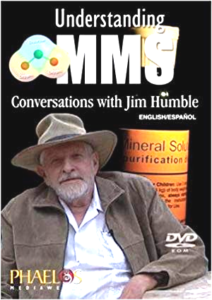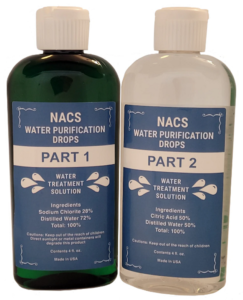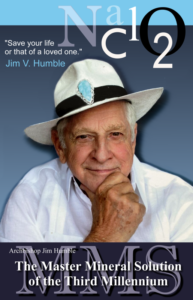MMS, or Master Mineral Solution, is a sodium chlorite solution activated with an acid to produce chlorine dioxide, a compound known for its antimicrobial and oxidative properties. It has been widely used for various health purposes under the protocols introduced by Jim Humble and others. This guide explains the basics of MMS and the differences in solution quality, storage recommendations, activation methods, and usage protocols.
Understanding the Composition and Quality of MMS
- Sodium Chlorite Concentration: MMS solutions are typically available in concentrations of 22.4% to 28% sodium chlorite.
- Purity Matters:
- Higher purity solutions (e.g., 22.4%–22.5%) contain fewer impurities and are equivalent in efficacy to technical-grade 28% solutions, which often include up to 20% additives from the manufacturing process.
- Sensitive users may find purer solutions more suitable.
- Storage Recommendations:
- Use glass or PE (polyethylene) bottles for storage.
- Avoid PET bottles, as they are not suitable for MMS storage.

Activation and Mixing Guidelines
To activate MMS, you’ll need:
- MMS Solution: A sodium chlorite solution at 22.4%–28%.
- Activator: Diluted citric acid (50%).
Activation Steps:
- Prepare a Clean, Dry Container:
- Always use a container made of glass, china, or plastic.
- Never use metal containers or utensils, as they may interfere with the oxidative properties of MMS.
- Combine Drops:
- Add the specified number of MMS drops to the container.
- Add an equal number of drops of the activator solution.
- Wait for Activation:
- Allow the solution to activate for the recommended time (usually 20–30 seconds) until the solution turns amber in color.
- Dilute and Drink:
- Add water to the activated solution and consume immediately.
Protocols for MMS Use
MMS can be used in several ways, depending on the individual’s health needs and tolerance. Here are the most common protocols:
1. Jim Humble’s New Standard Protocol
- Recommended for Critical Illness:
- Administer smaller, frequent doses over time to increase the total daily intake without overwhelming the body.
- This approach minimizes the risk of nausea or detox symptoms.
2. Jim Humble’s Old Standard Protocol
- Higher Initial Doses:
- Involves larger doses at less frequent intervals.
- May result in stronger initial detox symptoms, such as nausea.
3. 6+6 Protocol
- Intermediate Option:
- Combines aspects of both the new and old protocols, using six drops in two doses.
Preventing and Managing Nausea
- Eat an Apple: Consuming an apple 15 minutes before taking MMS can help prevent nausea.
- Threshold Management:
- Nausea is often a sign of the body’s threshold being reached.
- Once the body adjusts, higher doses can usually be tolerated with ease.
Best Practices and Safety Tips
- Use Non-Metal Tools:
- If stirring is desired, use a wooden stick or plastic spoon.
- Avoid metal spoons or containers to prevent a loss of oxidative power.
- Start Low, Go Slow:
- For new users, starting with smaller doses and gradually increasing can help minimize adverse reactions.
- Hydrate Well:
- Drinking plenty of water throughout the day supports the body’s detoxification process.
- Listen to Your Body:
- If nausea or discomfort occurs, reduce the dose and proceed gradually.
Chlorine dioxide, commonly referred to as MMS, is a powerful solution that, when used correctly, can offer significant benefits. Following the recommended activation, dosage, and protocol guidelines ensures its effectiveness and minimizes side effects. For those who are critically ill, Jim Humble’s new protocol is the preferred choice, while others may find the old standard or 6+6 protocol suitable. Proper storage, preparation and mindful consumption can help users safely incorporate MMS into their health regimen.





Is this helpful for pelvic floor prolapse